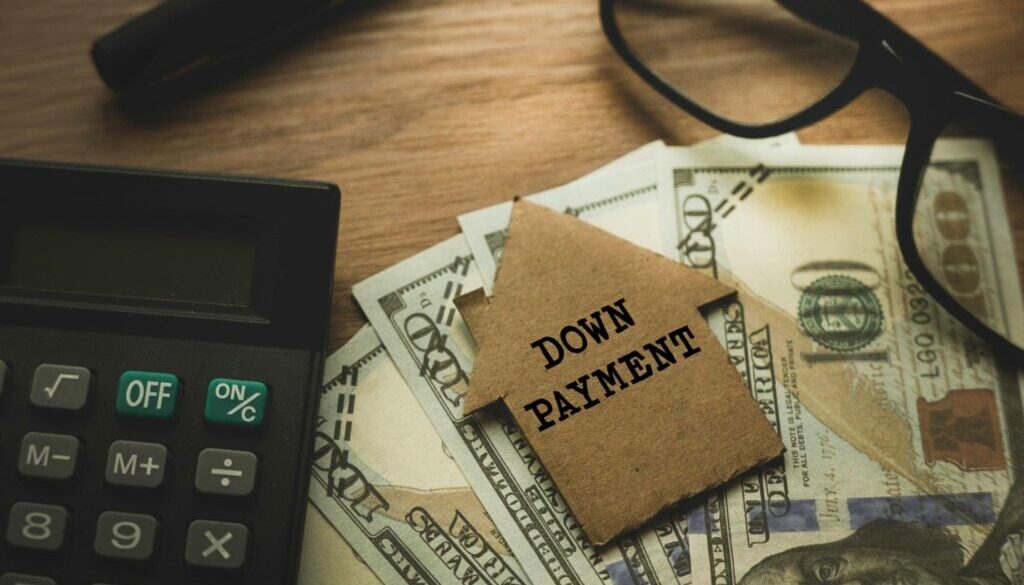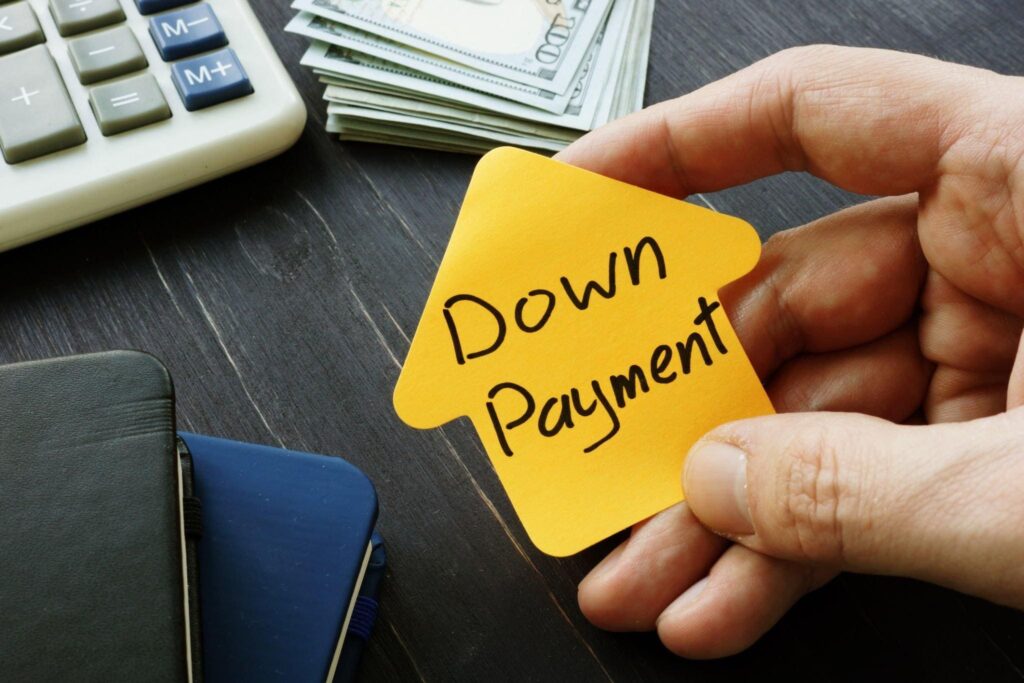How much is a Down Payment on a House?
The decision to buy a home is often a significant step in a person’s life. One of the essential components of this process is the down payment, which represents an upfront payment of a portion of the home’s purchase price. This article breaks down what a down payment is, why it’s essential, and the various factors and resources related to it.
What is a Down Payment?
A down payment is a lump sum of money that a homebuyer pays upfront when purchasing a house. It represents a portion of the total purchase price and is typically expressed as a percentage of the home’s value. The remaining amount is financed through a mortgage loan, which is repaid over time, usually with interest.
Why is Down Payment Necessary?
The main reasons why a down payment is necessary in the homebuying process are as follows:
- Reduces the Loan Amount: By making a down payment, you are reducing the amount you need to borrow from the lender. This, in turn, lowers the overall mortgage amount and can lead to more favorable loan terms.
- Reduced Interest Costs: By borrowing less money, you will pay less interest over the life of the loan. This can save you a significant amount of money in interest payments over the years.
- Shows Financial Capability: Providing a down payment demonstrates your ability to save money and manage your finances responsibly. It signals to the lender that you are financially stable and are more likely to repay the loan.
- Lowers Lender’s Risk: A down payment acts as a buffer for the lender. If you put your own money into the purchase, you have a vested interest in maintaining the property and making timely mortgage payments. This reduces the risk for the lender in case of default. A substantial down payment demonstrates financial responsibility and can improve your chances of loan approval, especially if you have a lower credit score or less stable income.
- Reduces Monthly Mortgage Payments: A larger down payment means you are borrowing less, which translates to lower monthly mortgage payments. This can make homeownership more affordable and leave you with more disposable income.
- Avoids Private Mortgage Insurance (PMI): If you make a down payment of less than 20% on a conventional loan, lenders often require you to pay for private mortgage insurance (PMI). A 20% down payment allows you to avoid this additional cost.
- Equity and Homeownership: A down payment immediately builds equity in your home. Equity is the difference between the home’s value and the amount owed on the mortgage. It represents ownership and can be tapped into through home equity loans or lines of credit.
- Negotiating Power: A substantial down payment can give you more negotiating power when dealing with sellers. They may view you as a more serious buyer, potentially giving you an advantage in competitive housing markets.
While a down payment is typically necessary, the amount required can vary based on factors such as the type of mortgage, the lender’s requirements, and the buyer’s financial situation. There are some loan programs, such as VA and USDA loans, that offer the option of no down payment for eligible borrowers. However, in general, making a down payment is an important step in the homebuying process that benefits both the buyer and the lender.
How much is a Down Payment on a House?
Down payment on a house typically ranges from 3% to 20% of the home’s purchase price. The exact amount depends on various factors, including the type of mortgage loan you qualify for, your creditworthiness, and the lender’s requirements.
Here’s a breakdown of the down payment percentage based on different loan types:
- Conventional Loans: These are not backed by the government and usually require a down payment of 5% to 20% of the home’s purchase price. However, some lenders might offer conventional loans with as little as 3% down for qualified borrowers.
- FHA Loans: Backed by the Federal Housing Administration, FHA loans typically require a down payment of 3.5% of the home’s purchase price. These loans are popular among first-time homebuyers and those with lower credit scores.
- VA Loans: Available to eligible veterans and active-duty military personnel, VA loans offer the benefit of no down payment requirement.
- USDA Loans: Offered by the U.S. Department of Agriculture, USDA loans are designed for low-to-moderate-income homebuyers in rural areas. They also offer the benefit of no down payment requirement.
Keep in mind that if you make a down payment lower than 20% on a conventional loan, you might be required to pay for private mortgage insurance (PMI) to protect the lender in case of default. PMI can add to your monthly mortgage costs.
Do I need a Down Payment?
A down payment is not always mandatory, as there are some loan programs that offer the option of zero or low down payment. However, making a down payment can have several advantages, including lower monthly payments, reduced interest costs, and greater equity in your home. Additionally, a larger down payment may improve your chances of loan approval and potentially provide you with better loan terms.
Are there Down Payment Assistance Programs?
Yes, there are down payment assistance programs available to help qualified homebuyers with their down payment and closing costs. These programs are typically offered by state, local, and nonprofit organizations, as well as some employers and housing authorities. The main goal of these programs is to make homeownership more accessible, especially for first-time homebuyers and low to moderate-income individuals and families.
Here are some common types of down payment assistance programs:
- Grants and Forgivable Loans: Some programs provide grants or forgivable loans that do not need to be repaid if certain conditions are met. These funds can be used to cover part or all of the down payment and closing costs.
- Deferred Payment Loans: With deferred payment loans, the down payment assistance is provided as a loan with no interest and no monthly payments. The loan is usually due when you sell the home or refinance it.
- Low-Interest Loans: Some programs offer low-interest loans to cover a portion of the down payment. These loans have more favorable terms compared to traditional mortgages.
- Employer Assistance: Some employers offer down payment assistance or homeownership programs as part of their benefits package to help their employees become homeowners.
- State and Local Housing Agencies: Many states and local housing agencies offer down payment assistance programs specifically tailored to their residents’ needs.
Eligibility criteria and available assistance amounts can vary significantly from one program to another. These programs often have income limits, and some may require homebuyer education courses as a condition of receiving assistance.
If you are interested in exploring down payment assistance programs, it is a good idea to research options available in your area. You can check with local housing authorities, nonprofit organizations, or reach out to a mortgage lender who can guide you through the process and provide information about any available programs.
Where can my Down Payment come from?
Your down payment can come from various sources, depending on your financial situation and the type of loan you are obtaining. Here are some common sources from which you can fund your down payment:
- Personal Savings: The most common and straightforward source is your personal savings. If you have been setting aside money for a down payment, using your savings is a great way to fund it.
- Gifts from Family or Friends: Some loan programs allow you to use gift funds from family members or close relatives to cover your down payment. Lenders typically require a gift letter stating that the money is a gift and not a loan that needs to be repaid.
- Sale of Assets: If you have valuable assets, such as stocks, bonds, or other investments, you may choose to sell them to generate the funds for your down payment.
- Work Bonuses or Incentives: If you have received a work bonus or other financial incentives, you can consider using these funds towards your down payment.
- Proceeds from a Home Sale: If you are selling an existing home to buy a new one, the proceeds from the sale can be used as a down payment for your new property.
- Retirement Accounts: In some cases, you may be able to withdraw funds from certain retirement accounts, such as an Individual Retirement Account (IRA), without penalty for the purpose of a down payment. However, this option may have tax implications, so consult with a financial advisor before taking this step.
- Down Payment Assistance Programs: As mentioned earlier, there are various down payment assistance programs available that provide grants, loans, or other financial assistance to help eligible homebuyers with their down payment and closing costs.
Keep in mind that the source of your down payment may be subject to verification by the lender during the mortgage application process. Lenders typically want to ensure that the funds are coming from legitimate and documented sources.
Final Thoughts
While making a larger down payment can offer many benefits, putting all your savings into a down payment might leave you without an emergency fund or cash for other important expenses.
Discuss your specific situation with a mortgage lender or a financial advisor before finalizing your down payment plan. They will help you strike a balance that aligns with your overall financial situation and goals, determine the most suitable and permissible sources of funds for your down payment based on your unique circumstances, and make sure your down payment meets lender requirements.
Please reach out to me with questions regarding your down payment options at 312-296-4175 or email me at connect@borislending.com. I lend in all 50 states and I am never too busy for your referrals!!
I have been in the mortgage industry since 1997 and I understand the anxiety that comes with making the most expensive investment of a lifetime. My objective is to be your advisor, to educate you and to make the mortgage loan transaction as transparent and as stress-free as possible. I enjoy establishing personal connections and work mostly by referral. I thoroughly explain the process and available options, and guide my clients to make choices that best fit their needs and financial goals. Once the underwriting begins I communicate regularly and keep my clients apprised of the loan status from the beginning through the end. My relationship with clients does not end at the closing table. You are my client for life and I am always available to answer your questions and provide you with guidance.


